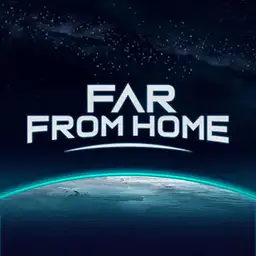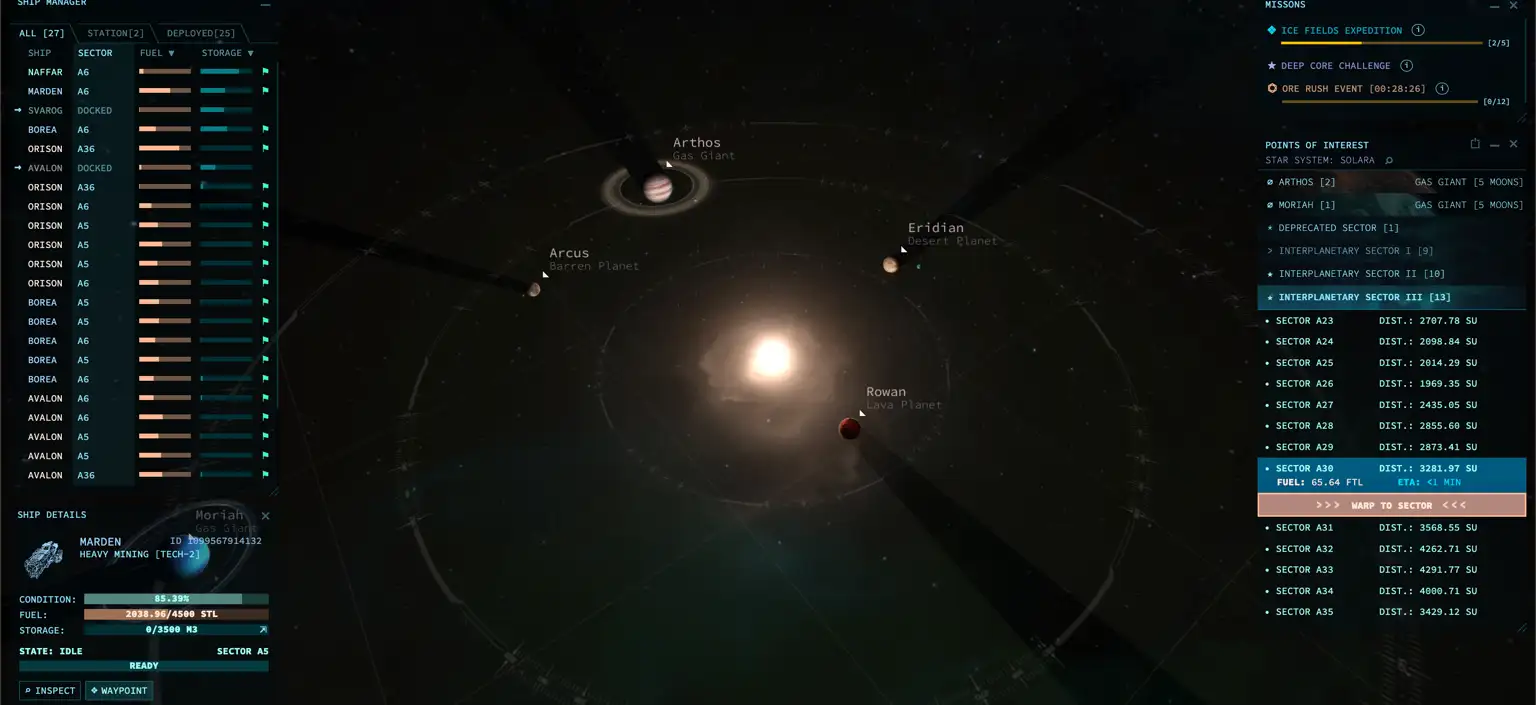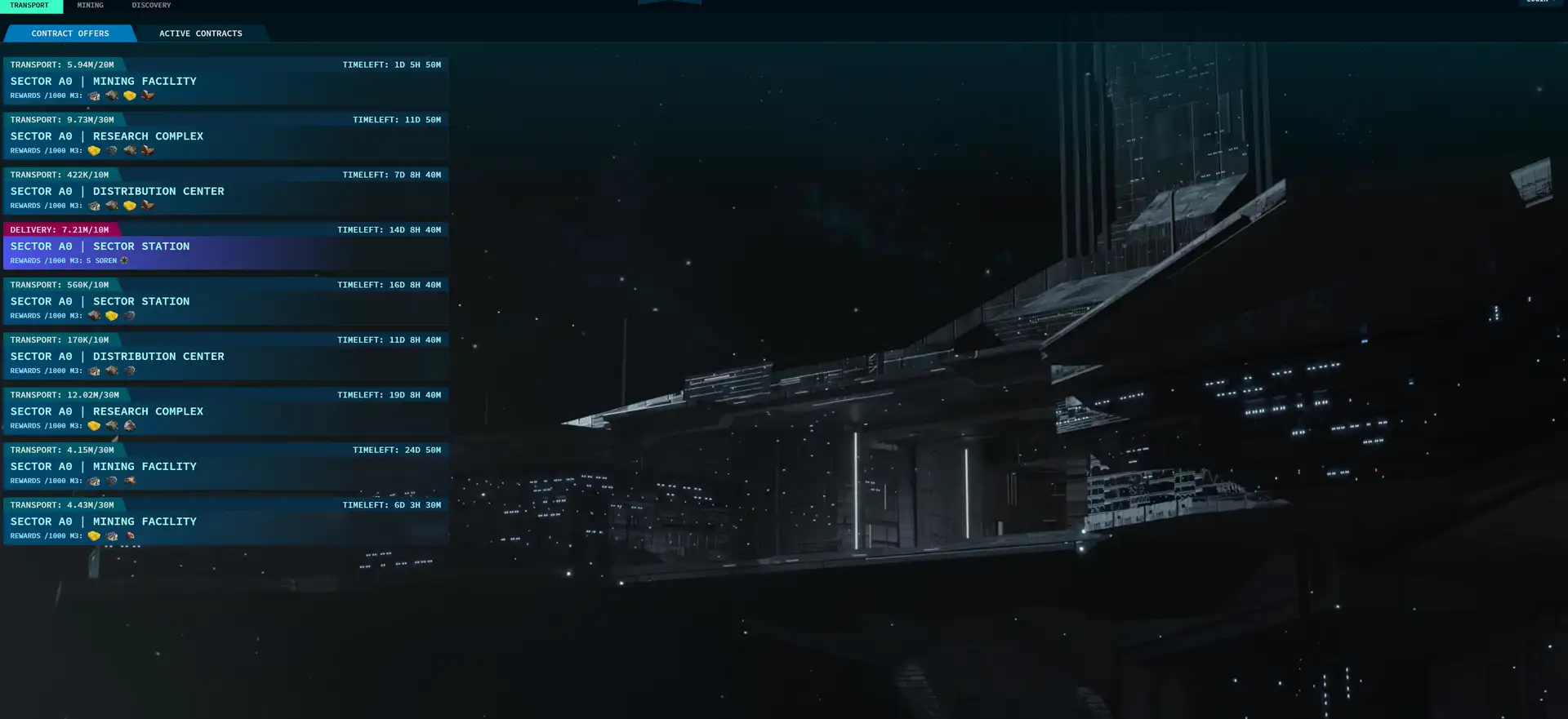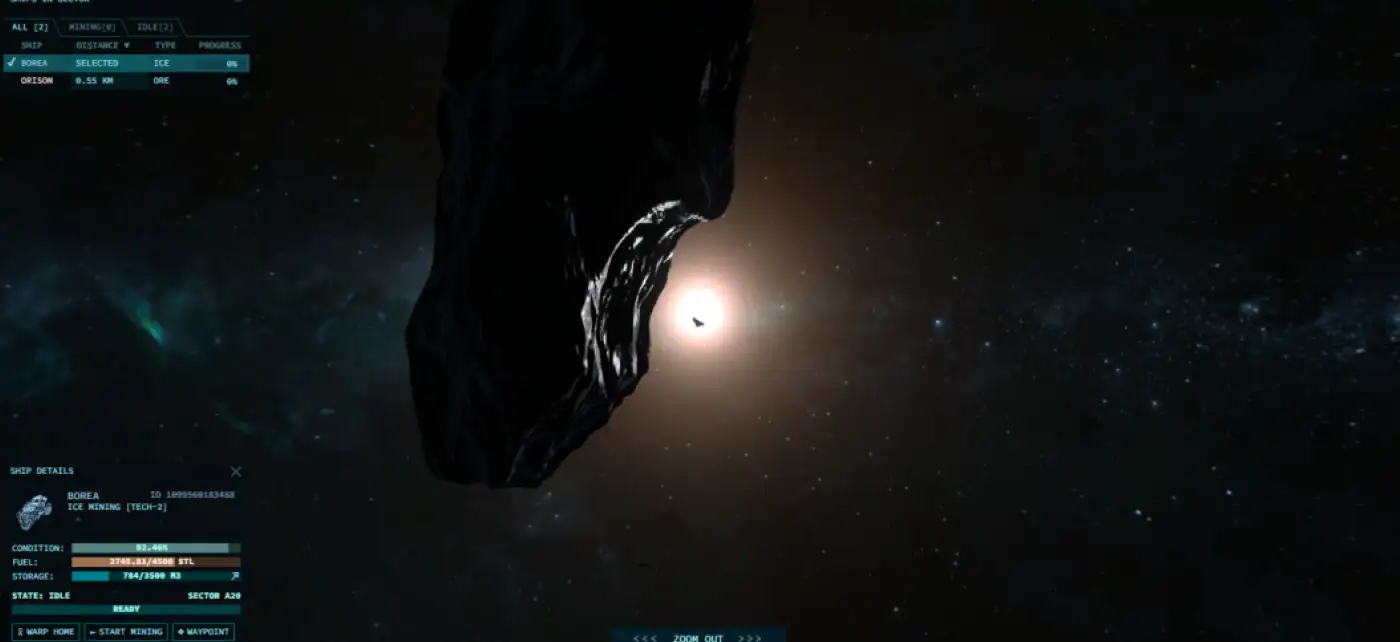About Far From Home
Far From Home is a blockchain-powered open-world multiplayer game set in a dynamically expanding universe. Built on the principles of economic depth, strategic decision-making, and interstellar exploration, Far From Home places players in command of industrial fleets, challenging them to mine, manufacture, and navigate through hostile and resource-rich territories.
At its core, Far From Home introduces a robust, player-driven economy that mirrors real-world industrial complexity. From asteroid mining and ship engineering to long-haul logistics and space infrastructure development, every element in the game is designed with layered progression and systemic value creation. It merges NFT-based ownership with in-game productivity, making it a forward-thinking entry into the growing genre of blockchain-based simulation and strategy games.
Far From Home began development with the mission to redefine space-based simulation games by combining immersive gameplay with decentralized ownership and economic simulation. What sets Far From Home apart is its focus on building a sustainable player-led ecosystem through layers of mining, production, trade, and strategic planning. The game’s ongoing seasonal development model—now in Pre-Season 5—has introduced new mechanics such as contract-based logistics, advanced extraction tech, and dynamic sector rotation.
The universe in Far From Home is structured around sectors and star systems, with the Solara System acting as the current hub of activity. Within these systems, players can mine from asteroid fields, refine materials, manage fleets, and contribute to the interstellar economy. As the game progresses, new frontiers such as gas giant mining, colonial infrastructure, and planetary exploration are planned, further broadening the scope of gameplay and economic opportunity.
The production model is meticulously designed, progressing from ore and ice mining to the creation of basic components, advanced machinery, and even full-scale starships. These activities are not just visual effects or passive time sinks—they’re interactive gameplay mechanics that require planning, resource management, and investment in ship customization and fleet efficiency. The game’s emphasis on logistics, scalability, and reward optimization aligns it more closely with titles like EVE Online and Star Atlas, but with a tighter focus on DeFi utility and user ownership.
Development milestones are regularly documented in the in-game Galactopedia, offering transparency and constant evolution. With each update—such as the Moriah Asteroid Sector release or the Tech 2 fleet expansion—players receive new mining types, ships, and components. The roadmap continues to expand with plans for planetary colonization, structure deployment, hauling missions, and deeper resource ecosystems, setting the stage for Far From Home to become a long-term simulation world rather than just a game.
Far From Home features a deep, systemic gameplay model built around industrial economics, strategic fleet management, and layered production. The game's primary loop begins with asteroid and ice mining, where players use industrial ships to warp into sectors and scan for resource nodes. Using FTL fuel to initiate travel and STL propulsion to approach asteroid fields, players engage in real-time resource extraction, factoring in asteroid type, resistance, and their ship’s technology tier.
Once materials are mined, they’re transported to refining stations where raw resources are converted into usable elements and materials. These refined assets are then used in manufacturing complexes to craft components such as extraction units, scanning modules, or storage upgrades. For example, the Nova-C12 Ore Extractor offers high-yield asteroid mining, while the Tundra-MH9 Ice Extraction Unit specializes in rare ice types. All components affect ship performance and are critical in customizing industrial efficiency.
A standout feature is ship customization. Each vessel has modular upgrade slots for various systems: extraction lasers, storage expansions, propulsion boosts, and more. The strategic use of these upgrades determines mining yield, contract performance, and travel efficiency. Ships are organized and managed from the Hangar, where players can refuel, repair, and prepare for deployment.
The game also includes a contract system—such as Discovery, Hauling, and Engineering missions—that introduces time-limited tasks and reward challenges. These contracts use logistics ships to transport materials or fulfill resource deliveries across sectors. As the system evolves, new missions tied to exploration, mining coordination, and gas giant extraction will deepen this gameplay avenue.
Visualized through a fully interactive 3D Star Map, players navigate the galaxy sector by sector, monitor mining results, set exploration waypoints, and track mission objectives. The Star Map integrates dynamic events, sector refreshes, and resource redistributions, keeping the game world evolving and challenging. Combined with future updates such as planetary structures, off-world industries, and AI-powered logistics, Far From Home aims to offer an expansive and rewarding sci-fi gameplay experience rooted in real-world economics and blockchain ownership.
Getting started with Far From Home is designed to be straightforward, yet rewarding for those who dig deeper into its systems. To begin your journey:
- Create an Account: Head to Far From Home and click on “Play Now” or “Login” to set up your profile. You’ll need a compatible WAX wallet (e.g., Wombat or Anchor) to interact with the game.
- Access Your Hangar: Visit the Hangar interface where your ships are managed. From here, you can refuel, repair, and equip your fleet with extraction modules and storage upgrades.
- Choose a Mining Sector: Navigate to the Star Map, select a mining zone such as the Moriah Sector, and deploy a ship using FTL fuel. Ships with proper modules can target specific asteroid types for optimized yields.
- Mine and Extract Resources: Engage in asteroid or ice mining using your customized fleet. Efficiency depends on your ship class, installed components, and the asteroid’s resistance stats.
- Refine and Manufacture: Return your mined materials to an NPC station and visit the Manufactory to transform resources into components or commodities.
- Customize and Scale: Use extraction units like the Erebus-GT1 or Nova-PR1 to improve performance. Blueprint crafting and tech upgrades will allow you to scale operations efficiently.
- Explore Contracts and Missions: As you progress, unlock Hauling and Discovery contracts to expand your gameplay, earn in-game rewards, and contribute to the player-driven economy.
- Join the Community: For tips, updates, and community interaction, join the project’s Discord or follow them on X (Twitter).
Far From Home Reviews by Real Users
Far From Home FAQ
The player-driven economy in Far From Home is built around a complete production chain where every material, component, and spacecraft originates from player activity. Players extract ores and ices through mining missions, refine them into elements and materials, and use those to craft industrial products or upgrade ships. The system is cyclical — miners supply manufacturers, manufacturers sell to traders, and traders fuel new missions — creating a living, player-controlled supply network that mirrors real-world industrial markets.
The industrial fleet forms the foundation of gameplay in Far From Home. Each ship, from small prospectors to massive cargo haulers, contributes to resource extraction, logistics, and production. Players can deploy specialized vessels like ice miners or ore harvesters, equipped with modular components such as the Nova-C12 Ore Extractor or Tundra-MH9 Ice Unit. These fleets not only define a player’s industrial power but also fuel the game’s entire economic ecosystem by linking exploration with production and trade.
Ship customization in Far From Home goes far beyond cosmetics — it’s a functional engineering system that determines performance in mining, hauling, and combat operations. Each ship has upgrade slots for extraction tools, scanners, propulsion units, and cargo modules. Choosing the right combination can improve mining efficiency, cargo capacity, and FTL fuel economy. This modular system lets players design specialized fleets tailored to their industrial strategy, making ship configuration a core element of success rather than just personalization.
The Moriah Asteroid Sector is a major expansion in the Far From Home universe, introducing dynamic mining zones and new rare resources that reshape the in-game economy. Materials like Ferberite, Thorite, and Welinite are now available exclusively in Moriah, each serving as input for advanced industrial components and crafting blueprints. The sector’s design encourages strategic fleet deployment, as its procedurally refreshed zones ensure that mining conditions constantly evolve, keeping the universe alive and unpredictable.
Contracts and logistics missions introduce a new layer of strategic depth to Far From Home. Through the Hauling and Discovery contracts, players can assign ships to long-distance transport, survey operations, or engineering challenges. These missions pay rewards based on efficiency and accuracy, offering both passive and active gameplay incentives. As development continues, contracts will expand into gas giant mining and deep-space survey missions, allowing players to build entire industrial empires that thrive on interstellar logistics and collaboration.
You Might Also Like














